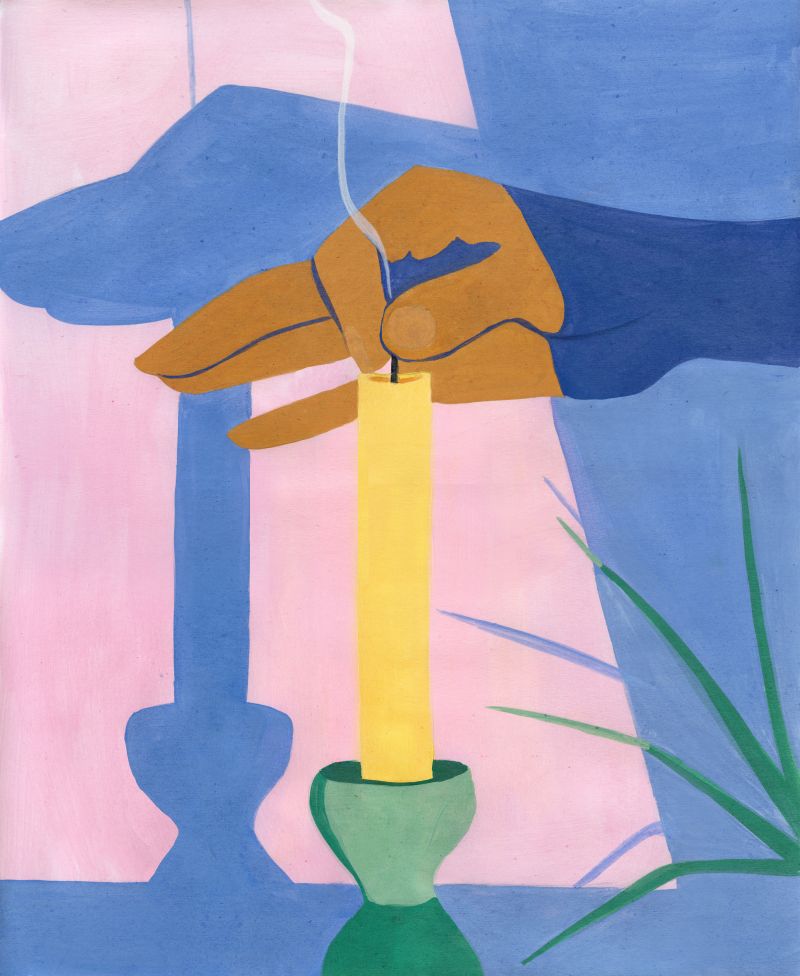“I would say my style focuses on merging analog and digital artwork in a minimalist way,” Holly told Creative Boom. “I primarily develop character designs and enjoy using bright golden hour lighting to amplify the beauty of soft, simple scenes. My work explores the complex nature of individuality, vulnerability and solitude.”
Completely self-taught, Holly has had no formal training or college education in draftsmanship or the visual arts. Instead, she studied multimedia and communication for her undergraduate degree. During this time, she explored animation and created looping motion graphics in Photoshop for fun.
After graduating, Holly moved to Montreal and enrolled in a graphic design course at Concordia University, where she learned the basics of Adobe Creative Suite. “That’s where I discovered a whole community of editorial artists on Instagram and felt like it was something I could do and enjoy,” she says. “I started to realize that illustration was more rewarding for me than animation and less tedious. So I went back to Toronto and sent my work to a few art directors. I worked part-time as nanny during my first year as a freelancer. I slowly made the transition to full-time work around the start of the pandemic.”
Aunts, 2021 – The New York Times © Holly Stapleton
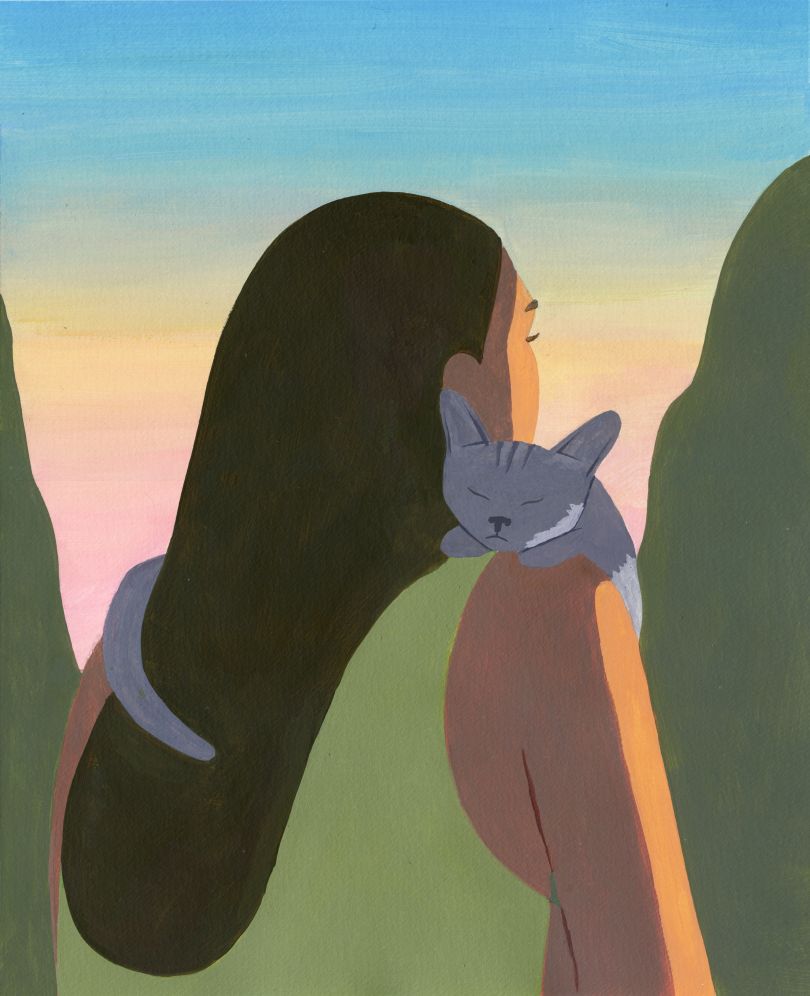
Cat Person, 2021 © Holly Stapleton

Gratitude, 2022 – The Wall Street Journal © Holly Stapleton
Scrolling through the portfolio she’s built so far – which includes work for The New York Times and The Washington Post – there’s a recurring theme of faceless characters; their characteristics are mysteriously unknown. It is certainly deliberate. “I’ve never been good at drawing faces,” she explains, “so facial details are usually something I wait until the end to add, and when I do, I often feel like it flattens the room Sometimes I feel like faceless characters are easier to understand and more elusive in a beautiful way, but I try to challenge myself to explore drawing faces this year.”
Recent projects include animation for Mighty Oak and its Netflix docu-series, The Principles of Pleasure. “It’s a three-part series that explores and debunks the myths surrounding women’s sexuality and pleasure,” says Holly. “I was asked to develop concept art for the first episode, which addresses the pleasure gap, barriers and shame that so many women face. I was very lucky to work with a group of creative so inspiring for my first collaborative project. I learned so much and gained so much respect for the animators on the team and their creative process. They did an amazing job bringing my artwork to life.”
Like many of us, Holly recently took some time off to rest and reflect after two years of a global pandemic. “Now that I’ve started working and making art again on a regular basis, I feel ready to challenge myself and take creative risks,” she tells us. “I critiqued my own style and pushed myself to do something a little more daring and honest.”
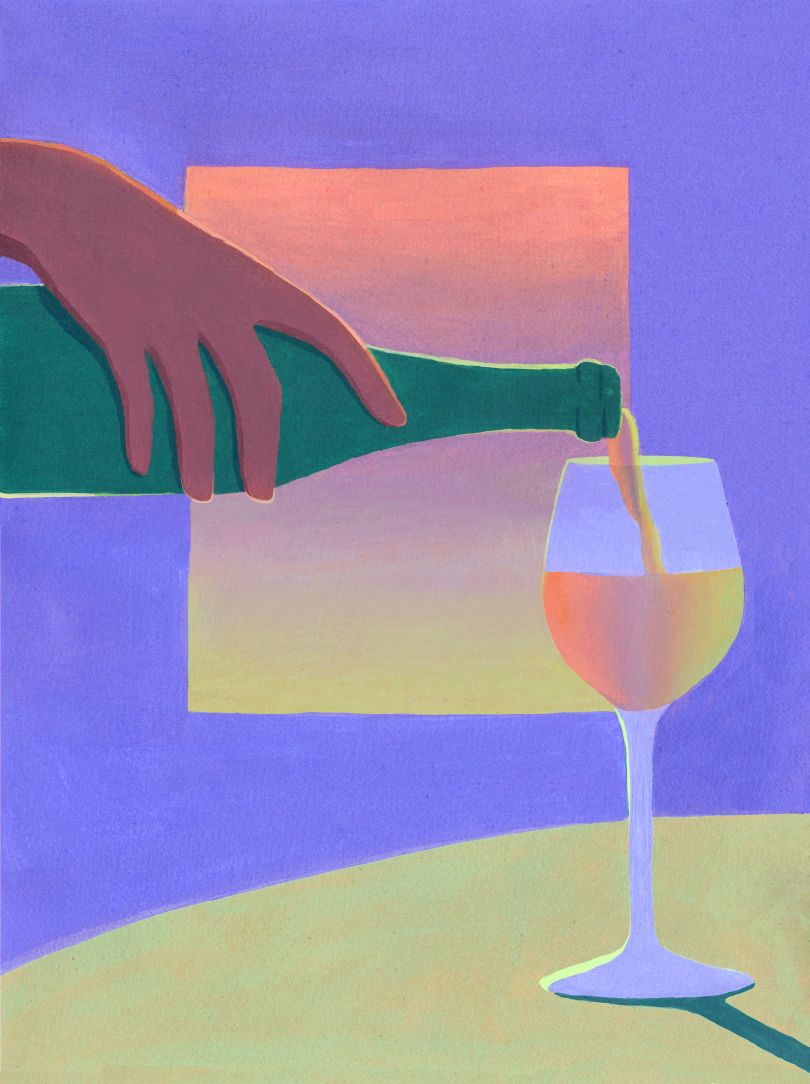
Glass of white, 2021 © Holly Stapleton
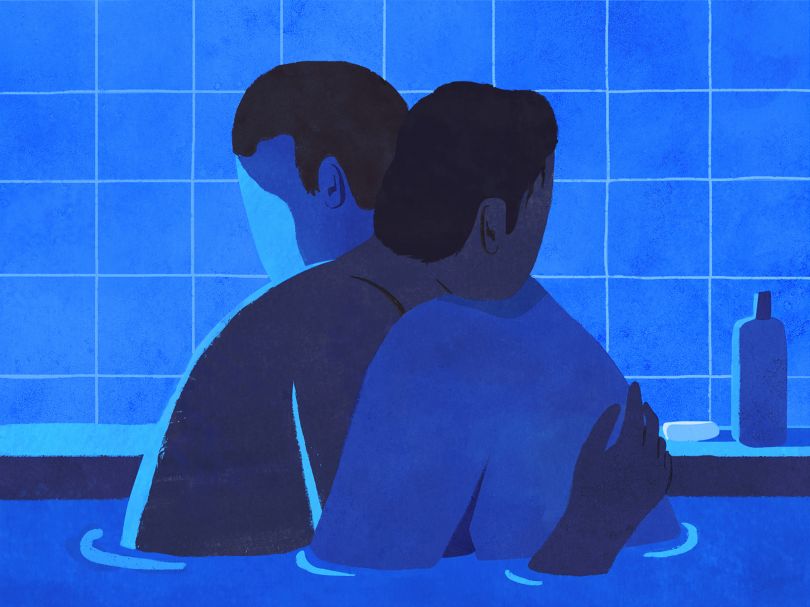
Partner Acceptance, 2022 – The New York Times © Holly Stapleton
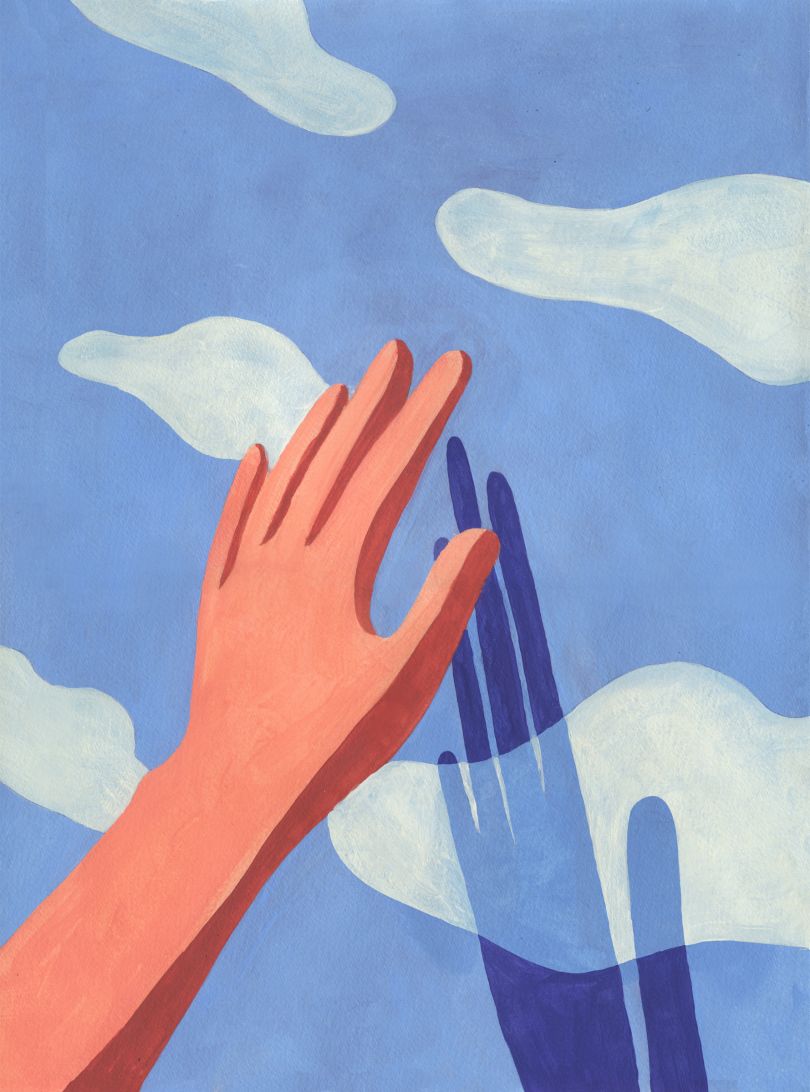
How is it going to end?, 2020 © Holly Stapleton
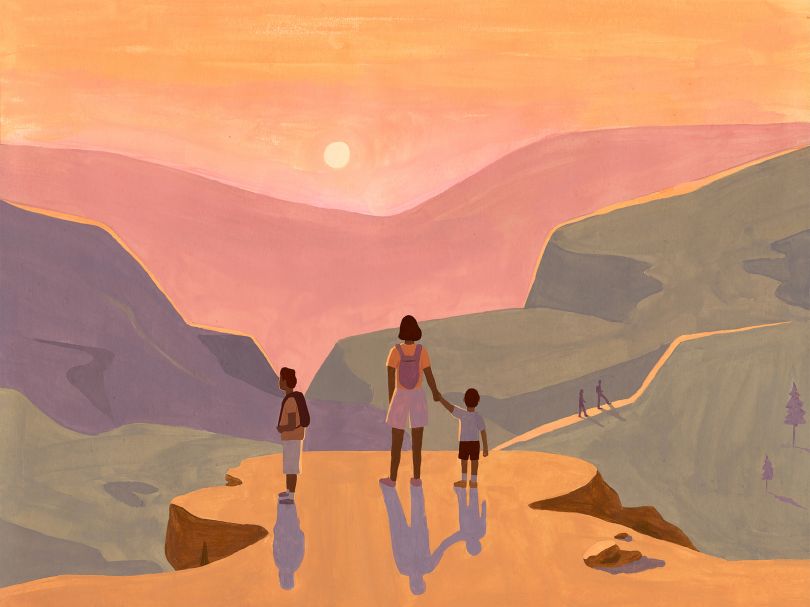
Working for The New York Times, 2021 © Holly Stapleton
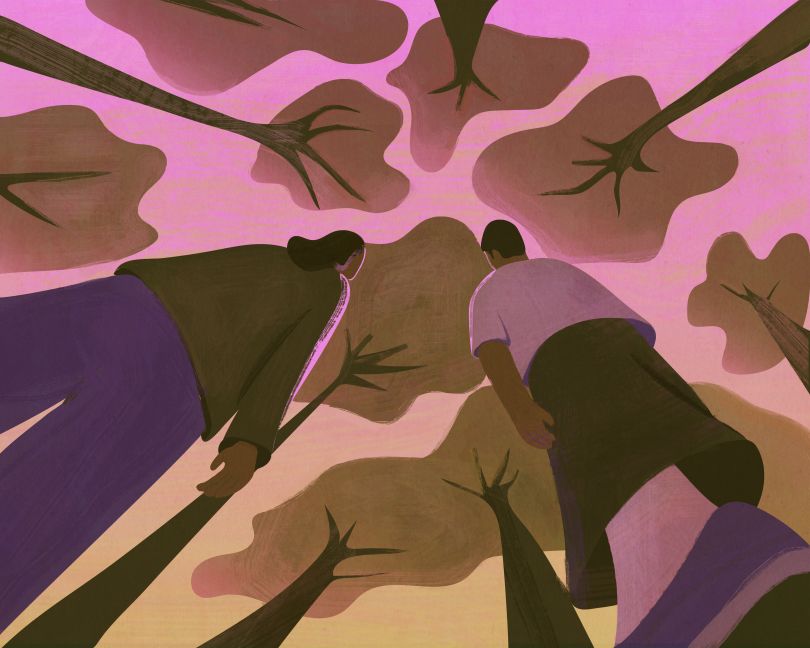
The Woods, 2022 © Holly Stapleton
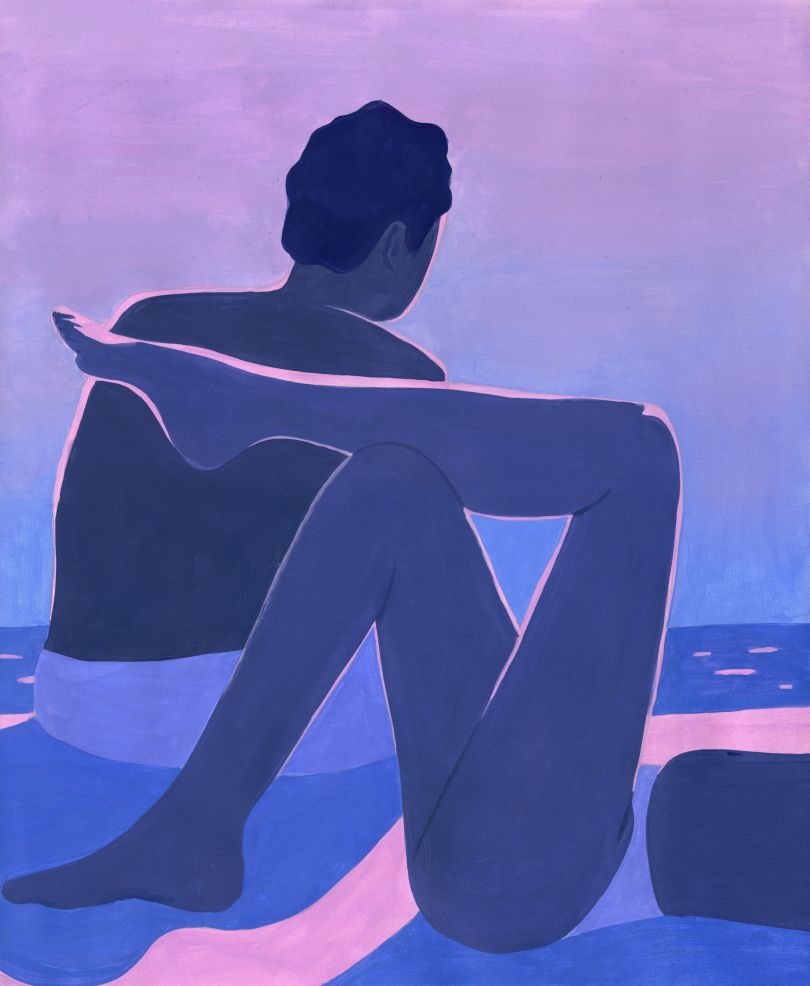
Summer People, 2022 © Holly Stapleton

